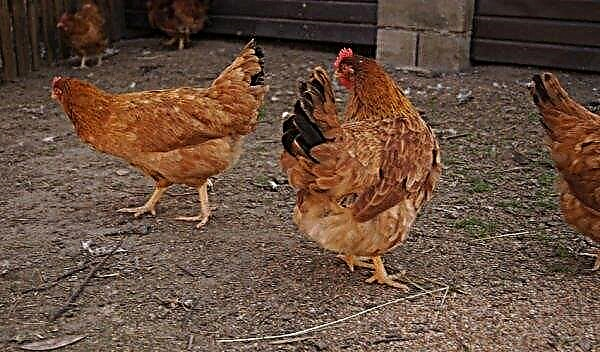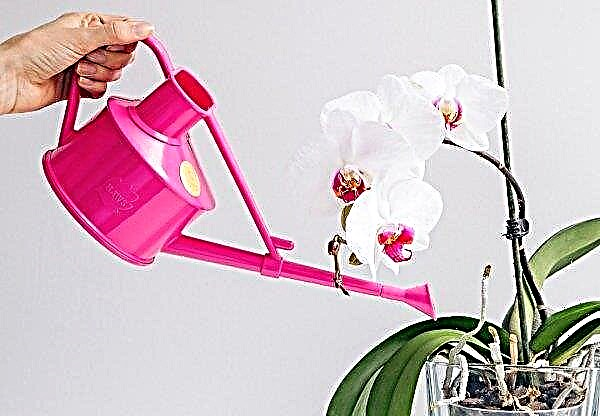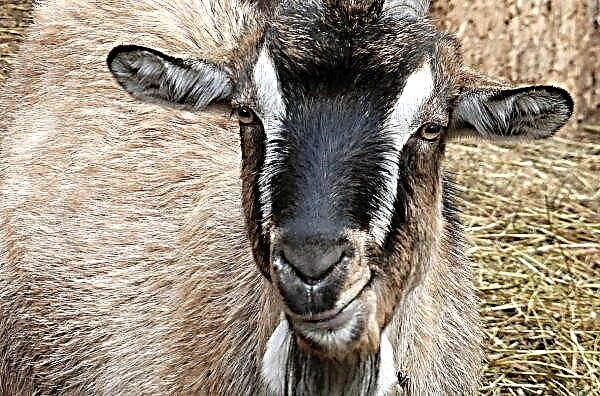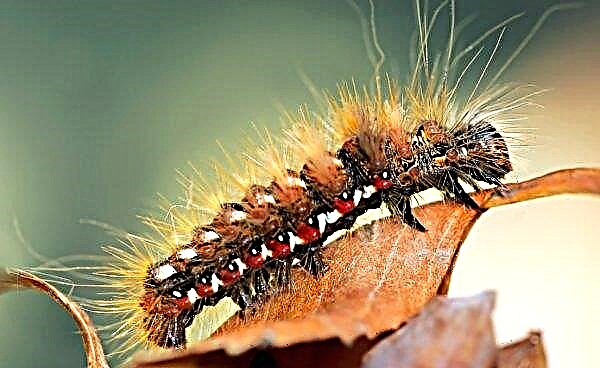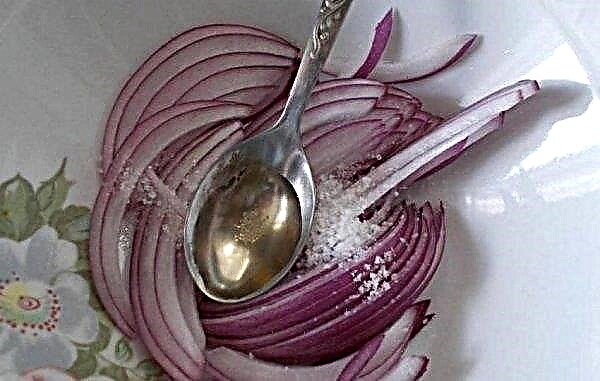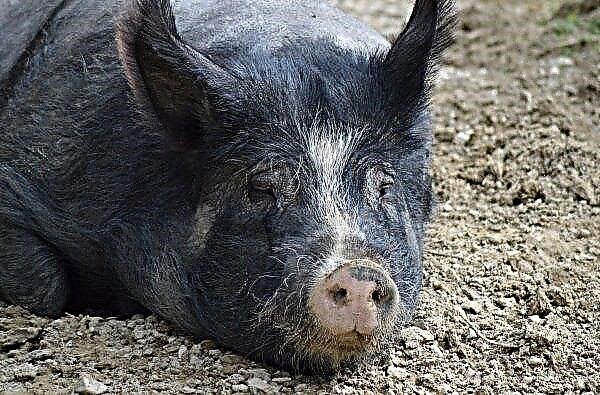Hydrangea macrophylla Red Angel (Hydrangea macrophylla Red Angel) is an incredibly beautiful ornamental shrub whose flowers can change their color throughout the season. A large-flowered flowering bush is used in landscaping to decorate personal plots. To grow this magnificent plant in your garden, simple rules for planting and care will help.
Botanical Description
Hydrangea variety Red Angel is a lush bush with flowers of bright hues: green prevails at the base, closer to the middle it smoothly turns into yellow, then into pink. The ends of the petals are painted red.

The foliage is large, dark green with a slight brownish tint. Young leaves are painted in purple. The veins on them are green and pronounced. The central buds contain seeds, so they never bloom. The flowers are large, with a diameter of 5–8 cm. The volume of spherical inflorescences is 25–30 cm.
The color palette of the plant varies depending on the composition of the soil. In alkaline soil, the petals acquire a bright scarlet hue, and in acidic soil - lilac. At home, the shrub grows up to 4-5 years. In the future, it is recommended to replace the bush with a new one.
Did you know? There is a beautiful Japanese legend according to which one of the emperors, wanting to apologize to the relatives of his chosen one, gave them a bouquet of hydrangeas. Since then, flowers have been a symbol of warm feelings and sincerity.
Variety Characteristics
Hydrangea Red Angel belongs to the Black Diamond series.
The variety is characterized by the following parameters:
- Frost resistance. The plant has medium resistance to cold and can withstand up to -23 ° C.
- Bloom. Buds bloom on last year's shoots. Flowering lasts from July to September.
- Growth rate. The shrub grows slowly, while maintaining a balance between the density of foliage and the number of flowers.
- Crown diameter. The plant is quite compact, with a dense dense crown, the volume of which is 100 cm.
- Height. The adult plant reaches 1.5 m.
The Black Diamond series also includes Dark Angel. Shrubs of this species, like the Red Angel, are able to change their color depending on the level of soil acidity.
Landing
Planting involves a few simple rules that will help grow a luxurious bush. Before proceeding with planting, a number of preparatory measures must be taken.
Preparing for landing involves the following steps:
- Determination of suitable dates.
- Site selection and soil preparation.
- Landing.
Best deadlines
Hydrangea can be planted in open ground in spring, when night frost stops and the earth warms up. The best period for planting is from mid-March to mid-April. Spring long rains will provide the plant with the plentiful hydration it needs. Heated earth will create comfortable conditions for rooting the seedling and the development of its root system.
Site selection and soil preparation
Direct sunlight is harmful to hydrangea: its growth slows down, and inflorescences become smaller. You need to choose a place to plant in darkened places, for example, in the shade of trees. It should also be borne in mind that the shrub of this variety prefers acidic soils. In alkaline soil, the plant will die. Earth must be loose and breathable. Moisture stagnation is not allowed.

The soil can be prepared as follows:
- Measure the acidity level. If the indicators are lower than 5.5 units, the soil must be additionally oxidized by adding an electrolyte solution to the loosened soil (10 l of water per 10 ml of oxidizing agent). If the pH exceeds 7 units, the soil will have to be limy (300 g of lime per 1 m²).
- Prepare the substrate by mixing river sand and turf in equal parts.
- Dig a hole 30 cm deep and 60 cm wide.
- Put drainage of broken bricks at the bottom with a layer of 15 cm.
- Pour out substrate (turfy earth and sand). Top with a handful of peat.
- Fertilize by adding mineral and organic fertilizers to the soil mixture, such as superphosphate and humus, in a 1: 1 ratio.
Important! The distance between the bushes should be at least 1 m.
Landing rules
Having decided on the place of planting and preparing the soil, you can begin to plant hydrangeas in open ground.
Landing pattern:
- Prepare seedlings by slightly shortening the roots.
- Install the seedling in the pit, leaving the root neck on the surface.
- To fill up with the earth.
- Pour 12 L of water liberally and mulch with a layer of humus or peat up to 5 cm thick.
- Tamp lightly.
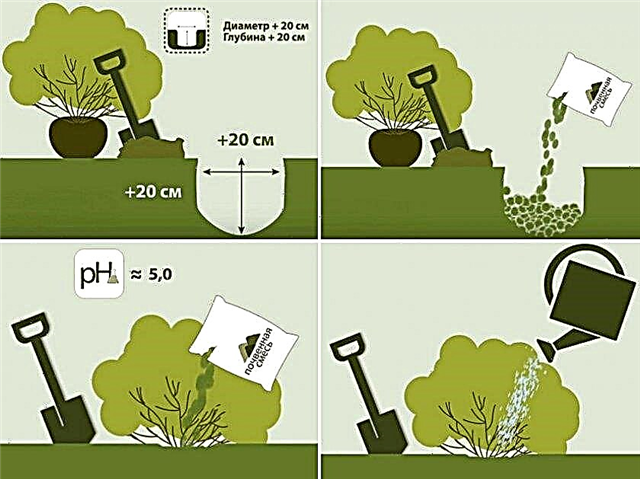
Care Features
It’s easy to take care of hydrangea, because the plant is quite unpretentious. However, to ensure harmonious growth and flowering, certain rules must be adhered to.
Quality care includes:
- watering;
- top dressing;
- pruning.
Next, you should familiarize yourself with the rules of care.
Watering
Hydrangea refers to hygrophilous plants and it requires abundant watering. It is better to water with settled rain water, that is, it is softer than tap water. Moisturize the plant in the evening or in the morning. One bush accounts for at least two buckets of water twice a week.
Important! Tap water contains alkali and is categorically not suitable for watering hydrangeas. Soil saturated with lime can cause a plant to develop a disease such as chlorosis.
After watering, the earth around the shrub should be mulched with peat, pine needles or sawdust. This measure will retain moisture in the soil. It is also recommended to periodically loosen the earth at a depth of 5-10 cm three times a season. This is required for soil ventilation.

Top dressing
Fertilize hydrangeas in spring or autumn before digging. Organic and mineral fertilizers can be used as top dressing. Superphosphate and rotted manure should be added to the soil in the amount of 1: 1. At the same time, it is important not to abuse the fertilizing, because too large flowers can break off the shoots.
Pruning
Bushes are trimmed for sanitary purposes and to give a decorative shape.
Trimming Rules:
- Cut shoots should be in the spring, after swelling of the kidneys.
- In preparing the plant for winter, it is necessary to remove branches of up to four buds.
- You can refresh an adult shrub by completely removing the branches so that only stumps remain.
- After planting the seedlings, during the first flowering, it is necessary to remove all the blossoming buds. This measure will allow the plant to be saturated with juices and fully develop. Next year, flowering will be even more plentiful.
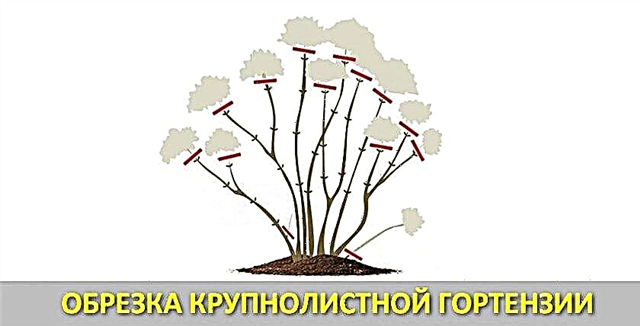
Also, after planting, it is necessary to prepare a young bush for wintering. In the beginning, you need to remove all the inflorescences and unripe leaves. Then wrap with spruce branches and sprinkle with dry foliage. From above it is desirable to cover with a box.
Hydrangea branches are very fragile, so you need to make sure that the lumps of snow falling from neighboring trees do not break them. The shrub, which has reached the age of two, does not need shelter for the winter, because its branches are covered with tree bark.
Breeding
You can propagate the shrub yourself. The result is planting material for group planting. Hydrangea is rarely propagated by seeds rarely.
Reproduction methods:
- Cuttings. In the period from mid-spring to early summer (April-June), shoots must be selected that are no more than a year old and at least 15 cm long. Then cut the cuttings from them at right angles. Next, at the base of the stem, remove all foliage and treat it with a growth-stimulating drug, for example, “Kornevin”. Then land in containers filled with a mixture of earth, sand and turf land (1: 1: 1). Store in greenhouse conditions until rooting. After the formation of young shoots, remove from the greenhouse and provide partial shade. Further care includes watering twice a week. Planting in the open ground next spring.
- Bush division. In spring or autumn, you need to dig a bush and divide it into several parts so that each fragment has a developed bud. Then plant in the ground in a permanent place.
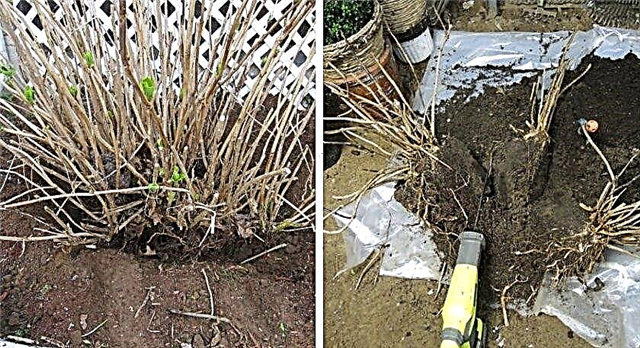
- Layering. To multiply the bush in this way, you need to choose a young shoot, not older than one year, and, bending its middle to the ground, fix it. The top, about 20 cm long, should remain free. The plant is completely rooted after a year. Then it needs to be separated from the mother bush and transplanted to a permanent place.
Landscape design application
Hydrangea bushes are planted in flower beds to decorate gardens. Also, a flowering plant looks great in the shade of large trees. Hydrangeas can be planted next to flowers and other deciduous shrubs. They are grown individually and in groups to frame alleys and garden paths. Ornamental shrubs are great for creating hedges.

Diseases and Pests
Diseases and pests can give gardeners a lot of trouble. To avoid many troubles, it is recommended to regularly carry out prophylaxis and follow the rules of hydrangea care. In particular, monitor the level of soil acidity and prevent moisture stagnation.
Did you know? Initially, in Europe, hydrangea was called the "Japanese rose."
Hydrangea is mainly attacked by such diseases and pests:
- Chlorosis. A plant may develop chlorosis due to iron deficiency. In this case, large yellow spots are observed on the entire surface of the sheet. In this case, treatment involves feeding iron sulfate. To prepare the solution, you need to add 2 g of vitriol in 1 liter of water and soften 4 g of citric acid.

- Black spotting. Due to excessive watering and stagnation of moisture in the soil, the leaves become slippery and become covered with dark spots, similar to rot. In this case, it is recommended to stop watering in for a while and scatter dry sawdust over the area where the bush grows.

- White rot. This is a fungus that affects the root system of the plant and sucks its juices. As a result, the bush does not receive enough nutrition, and its leaves are covered with a white coating, similar to flour. To get rid of a fungal disease, it is necessary to remove the affected leaves, and treat the cut points with a solution of manganese. Then you need to spray the bush with copper-containing preparations, for example, Bordeaux mixture.
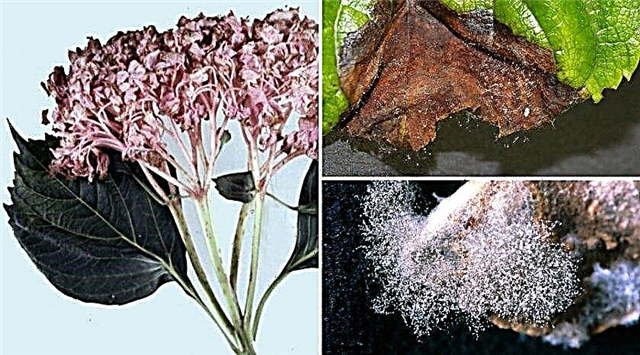
- Ring spotting. A dangerous viral disease that causes the death of a plant. When a virus is infected, annular spots form on the leaves. Then the hydrangea foliage dries, curls and falls. If the first signs of the disease are detected, immediately destroy the bush. Otherwise, all plants in the garden will be infected.
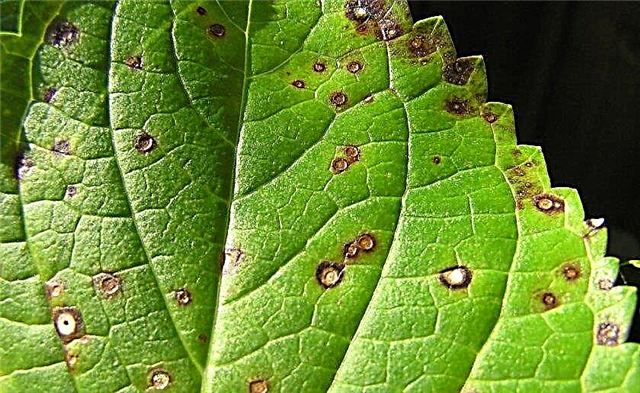
- Leaf aphid. A parasite that lives on the soft tissues of a plant, such as leaves and flowers. The pest eats the juice of the bush, depriving it of vital nutrient components. You can notice the activity of the pest by the state of the leaves: they become dry and turn yellow. With a small amount of aphids, it is enough to spray the bush with soapy water and sprinkle it abundantly with water from a hose. With a more serious lesion, treatment with insecticides, for example, Iskra or Bison, will be required.
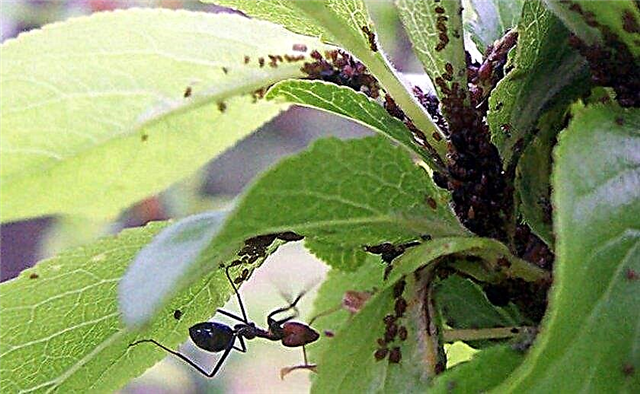
- Spider mite. A tiny parasite almost invisible to the naked eye. Traces of its activity can be determined by the web formed on the leaves. The tick multiplies in the summer, during the hot period, and feeds on plant juices. Deprived of nutritious moisture, the leaves begin to curl and dry. At the first sign, soapy water treatment will solve the problem. If the defeat has reached a large scale, the bush needs to be sprayed with special preparations designed to combat ticks, for example, Akarin and Lightning.
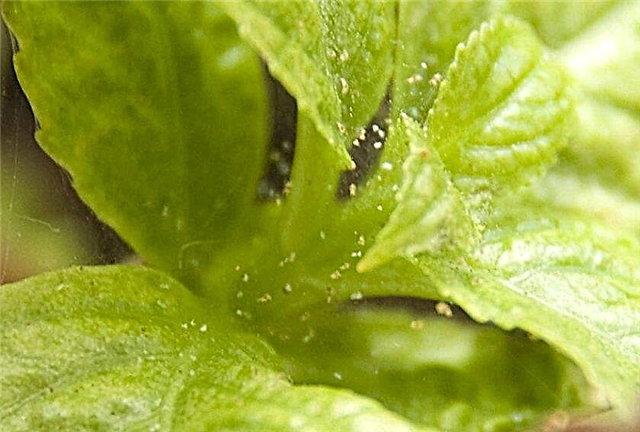
Hydrangea Red Angel - a graceful decorative bush that fills the garden with unique colors and aroma. Growing an unpretentious plant does not require special knowledge and skills. Quality care will help maintain the health and beauty of the shrub.








